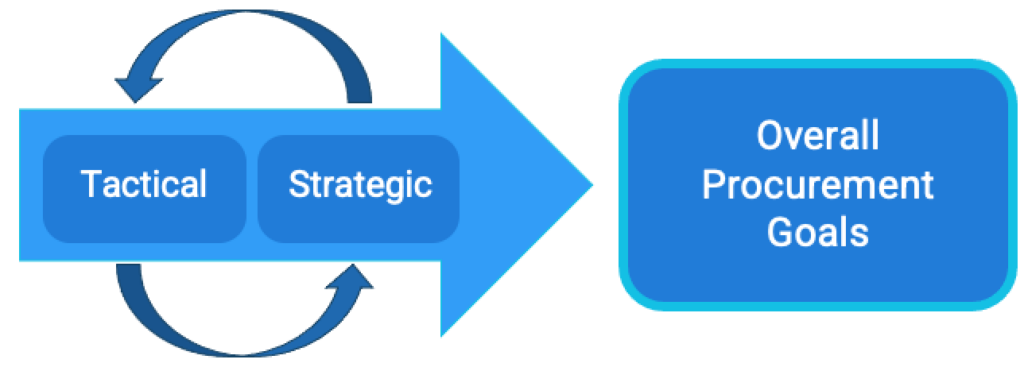When making purchases, it’s important to consider both tactical and strategic factors.

Tactical buying and strategic sourcing both contribute to overall procurement goals.
Organizations are transitioning the purchasing role from a mere tactical executor of purchase orders to a strategic position with decision-making responsibilities. This change presents a chance to offer more value to the company beyond just ensuring product availability and competitive pricing.
In the past, tactical purchasing emphasized on low prices, which involved transactional activities such as placing orders and receiving parts. However, companies now require more than just low prices and seek to collaborate with suppliers to find cost-optimization solutions, including value analysis. This calls for the implementation of strategic procurement.
One effective strategy for purchasing is to establish long-term relationships with a smaller number of reliable suppliers. This can lead to reduced total cost of ownership and increased innovation. However, adopting this approach may face opposition within a company, as both the organization and the purchasing department may need to shift their focus.
The purchasing department’s strategic responsibilities have expanded in the supply chain due to the increasing significance of outsourcing, globalization, and supply chain management.

Globalization – The interdependence of economics globally that results from the growing volume and variety of international transactions in goods, services, capital, and also from the spread of new technology.

Outsourcing – The process of having suppliers provide goods and services that were previously provided internally. Outsourcing involves substitution – the replacement of internal capacity and production by that of the supplier.

